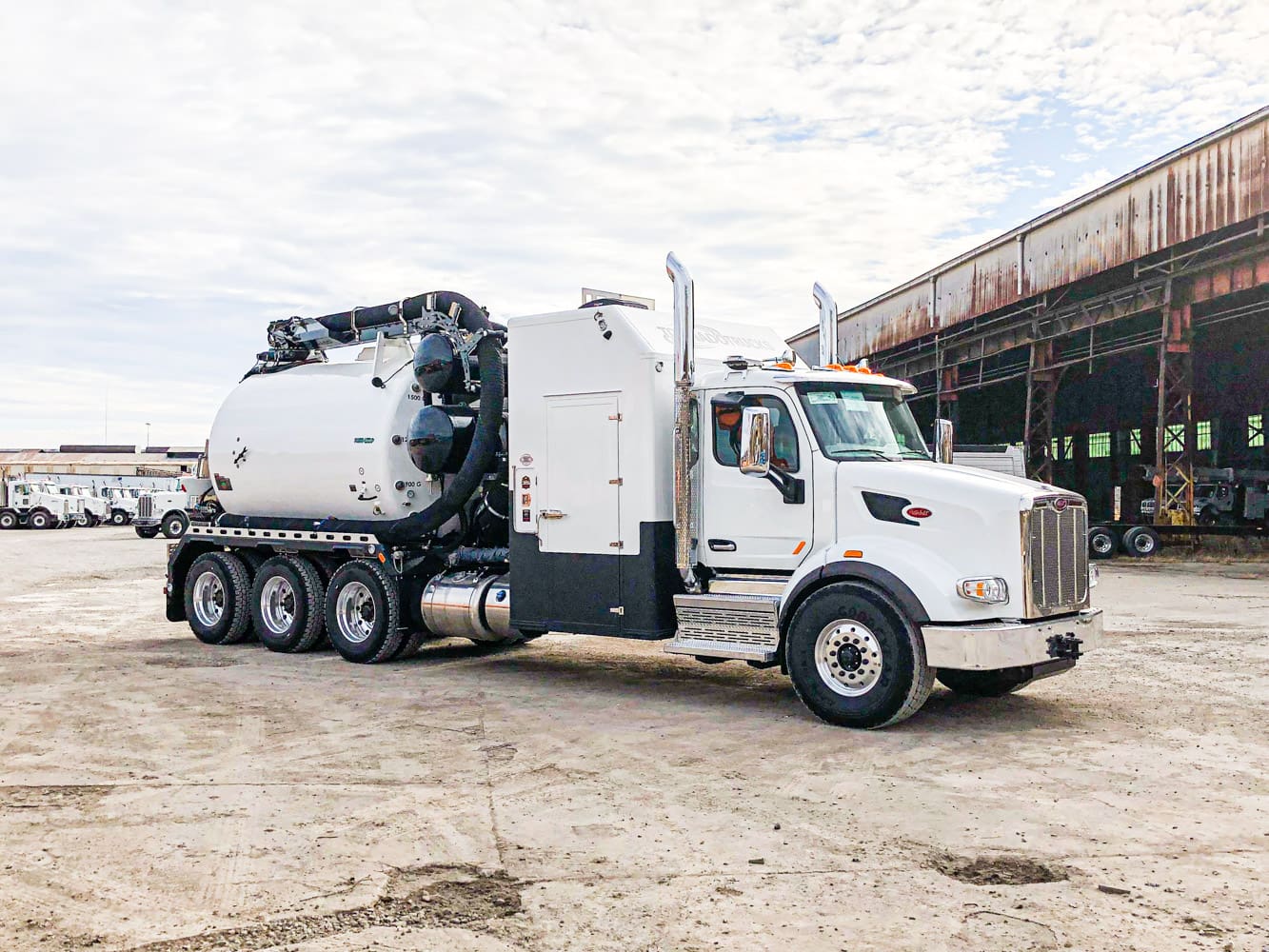
Any piece of machinery that rotates is subject to wear and tear. Think of ballplayers and their frequent rotator cuff injuries. The rotating nozzle used in a vac truck is no different. It requires regular maintenance. Though small in size, it is an important part of your vac truck and requires as much attention as larger components, if not more.
A malfunctioning rotating nozzle can cost you thousands of dollars, and not necessarily just for replacement. A defective nozzle can lead to wasted water and reduced performance while potholing, trenching, etc.
Here are some tips on how to best care for your nozzle.
- Choose the correct nozzle – Using the wrong nozzle for a particular job can lead to a multitude of problems, so it is incredibly important to start off with the right one. A rotating turbo nozzle, for instance, is perfect for potholing due to its flow pattern. A zero-degree nozzle, on the other hand, helps you easily cut through dirt, saves water, and is high impact. Clearly, different rotating nozzles have different functions, so choose wisely.
- Abide by pressure ratings – These are provided by manufacturers of nozzles, so make sure you comply with the guidelines. Going over the specified rating will permanently damage the nozzle. It’s best to maintain levels below the specs as this automatically extends the life of the nozzle. Think of it as your car and its given maximum speed. Travelling at this speed all the time will cause your engine to burn out.
- Beware of heat – Being aware of how much heat is the limit for your nozzle is imperative. 40 degrees Celsius (104 Fahrenheit) is typically considered the ideal temperature. Manufacturers give different heat ratings, and some of those may seem high. If they seem too high, they likely are. While the nozzle can operate at these temperatures, it won’t be for long. You need to be alert to your nozzle’s heat tolerance.
- Do not submerge – A nozzle is not a digging implement like a shovel, so jamming it into water or soil will result in gunk entering, which can seriously damage parts inside. A rule of thumb is to maintain a distance of 2 inches between the nozzle and the surface.
General Operating Issues
The best way to handle any problem with the nozzle is by following manufacturer guidelines. Many companies also have call centers to help you with an issue or, in some cases, social media pages. As you can see, there are plenty of options to deal with any problem with advice directly from the experts.
Flow Rate
Water flow is one of the keys to knowing if your nozzle is working properly. It should always be steady. You don’t want to end up with a trickle while in the midst of a job. Monitor the water flow from time to time to reaffirm that it’s still consistent. Manufacturers usually provide ideal settings, making it easier for you to know if the water flow is as it should be.
Also, keep a close eye on spray pattern. The last thing you need is for the nozzle to start spraying outside of the targeted area. It may take a bit of work, but bring out your tool kit and measure the spray pattern width. Again, manufacturers are there to help you. If you sense something is not right, report the problem to them, and they will conduct special tests. If anything is wrong, they will gladly fix it for you.
Replacement
The nozzle needs to be thoroughly checked as soon as possible. Any wear and tear can affect performance. Many manufacturers provide a maintenance program which you can follow. Overuse can wear out a nozzle, so be prepared to eventually replace it. It is a good idea to have spare nozzles of the same specs in stock. Having them available can make for quick, simple replacement.
Pressure Control
You can control the speed and pressure of the rotating nozzle. Of course, this depends on what job you are doing. It has been found that a lower liquid velocity out of the nozzle leads to it lasting longer and makes it less vulnerable to rust and general wear and tear.
Feed Liquid
Depending on the job, different kinds of liquids (feed liquids) are used. Some liquids contain harsh chemicals which can seriously damage a nozzle. This calls for dilution. Check the liquid container for exactly what concentrations you should use for the job at hand. Failure to dilute properly could not only damage the nozzle but also the area you are working on.
Clogging
A clogged nozzle is an ineffective tool. The nozzle has to be cleaned out at regular intervals with brushes or probes. Many nozzles come with built-in strainers to trap particles. Clean out the strainers after every job. Once a strainer is full of dirt and debris, your nozzle could suffer serious damage.
Treat your nozzle right and you’ll see the financial returns. Good luck!
Source: Hydrovac Nation



